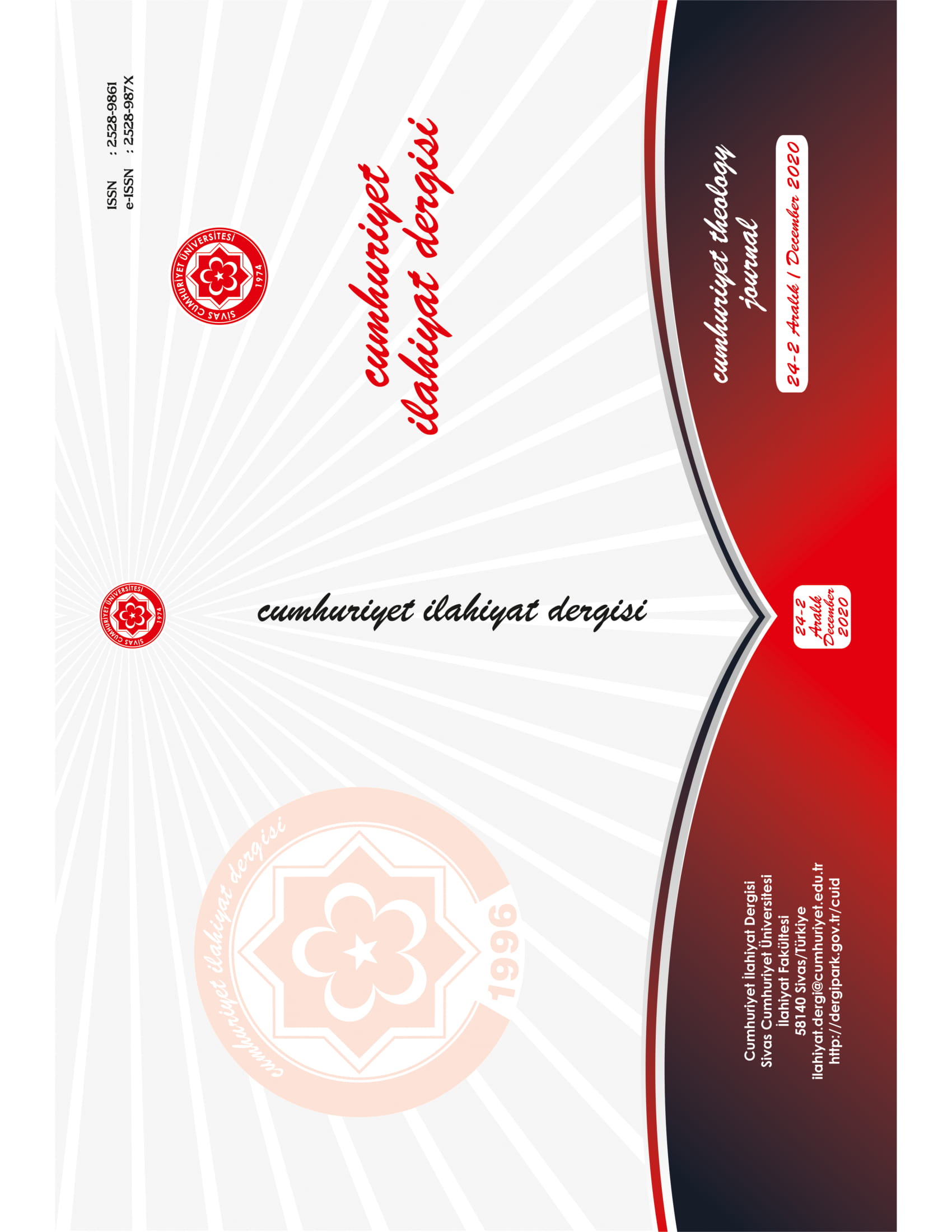İslam Düşüncesinde Avâm-Havâs Ayrımı
The Distinction of Ordinary (‘Awām) and Elite (Khawāṣ) People in Islamic Thought
Author(s): Emine Taşçı YıldırımSubject(s): Philosophy, Theology and Religion, Islam studies, Middle-East Philosophy
Published by: Cumhuriyet Üniversitesi İlahyat Fakültesi
Keywords: Islamic Philosophy; ‘Awām; Khawāṣ; Truth; Understanding Differences;
Summary/Abstract: Distinction of ‘awām- khawāṣ (the ordinary and the elite) is a general distinction in philosophical literature that shows the difference of people in their level of understanding the truth. It is possible to take this distinction back to Plato in Ancient Greek philosophy. Plato's hesitation in expressing his philosophical thoughts in written form, and Aristotle's use of obscure expressions and symbols in his works against the possibility of reaching those who are not competent, is a result of the distinction between ‘awām-khawāṣ. This distinction was covered in Islamic thought by associating it with the three addressing styles mentioned in the Quran and the fact that the prophet was proclaiming the message according to these addressing styles. The purpose of this study is to reveal how the truth should be conveyed to people of all levels through the evaluations of the Islamic philosophers and thinkers on the distinction between ‘awām and khawāṣ. In the study it will be attempted to find answers to the questions of what are the reasons leading the Islamic philosophers and thinkers to make the distinction between ‘awām and khawāṣ, what arguments they used to explained the necessity of this distinction and why is the distinction between ‘awām and khawāṣ so important. Firstly, the lexical and terminological meanings of the concepts of ‘awām and khawāṣ are introduced. The ‘awām, which is used to express the public, ordinary people, and the lower layer of the society, is a term that qualifies the ignorant society, who has adopted a system of imitation-based life and belief cannot understand the truth of life. Khawāṣ, who are defined as the elite, the prominent, who represents the intellectual group and strives to grasp the truth, base their life and belief on knowledge and attain a higher level of awareness. After the literal and terminological meanings, it has been proceeded to the historical background of this distinction. Then the views of Islamic philosophers and thinkers who directly point to this distinction in this regard have been examined by referring to their main works. These are al-Fārābī, Ikhvān-Ṣafāʾ, Ibn Sinā, Rāghıb al-Iṣfahānī, Ghazālī, Ibn Tufayl, Ibn Rūshd, Ibn'ūn-Nefīs. For instance, al-Fārābī makes a clear distinction between ‘awām and khawāṣ in his works on political philosophy. He addresses this distinction by stating that the virtuous city is divided into two groups, the difference is in the methods used by these group to grasp the truth, and that they can achieve happiness in different ways. Stating that people are made up of different groups, Ikhvān-Ṣafāʾ goes to the distinction of ‘awām- khawāṣ and classifies the sciences accordingly. In addition, Ikhvān-Ṣafāʾ say that the prophets pay attention to the mentioned distinction while communicating the message of Allah to people. Ikhvān-Ṣafāʾ have related this distinction to the distinction between exoteric and esoteric. The understanding of prophethood and eschatology of Ibn Sinā shows ‘awām-khawāṣ distinction very clearly, too. According to him the truth should be conveyed gradually. Ghazālī claims that the ‘awām should not demand the sciences that are not suitable for their cognitive level and that they should leave them to competent people. In Islamic thought the dominant idea is that both wisdom and religion are presented in exo-teric and esoteric knowledge and that the learning of the esoteric way is only necessary for the khawāṣ. The aim of the ‘awām-khawāṣ distinction is to prevent misunderstanding that would arise when the knowledge would be conveyed to wrong people and thus to prevent the loss of truth by those who are not competent. The majority of Islamic thinkers call ‘awām as people of imagination, and khawāṣ as people of thought. They think that the methods of thinking and imagining should be taken into account when explaining the religious and philosophical truths. They have also emphasized the perfection of the prophetic style of addressing society. The symbols and metaphors that the prophets used to express religious truths or the metaphors and symbolic stories that are preferred by philosophers to tell some truths can be seen as a product of the distinction between ‘awām and khawāṣ. As it can be seen in the example of Ḥay bin Ya-qẓān, explaining the truth clearly to ‘awām may cause them to deviate from the right way. For this reason, it is necessary to tell the truth to people according to their level of understanding. It is possible to say that the ideas of Islamic thinkers about this distinction still remain important to-day, due to the fact that people have different dispositions and their level of understanding is not the same despite a change in time and place. Therefore, the disadvantage as pointed out by the Islamic thinkers is that the attempt to convey the truth to people may not be able to reach its exact purpose by ignoring this distinction.
Journal: Cumhuriyet İlahiyat Dergisi
- Issue Year: 24/2020
- Issue No: 2
- Page Range: 665-685
- Page Count: 21
- Language: Turkish

